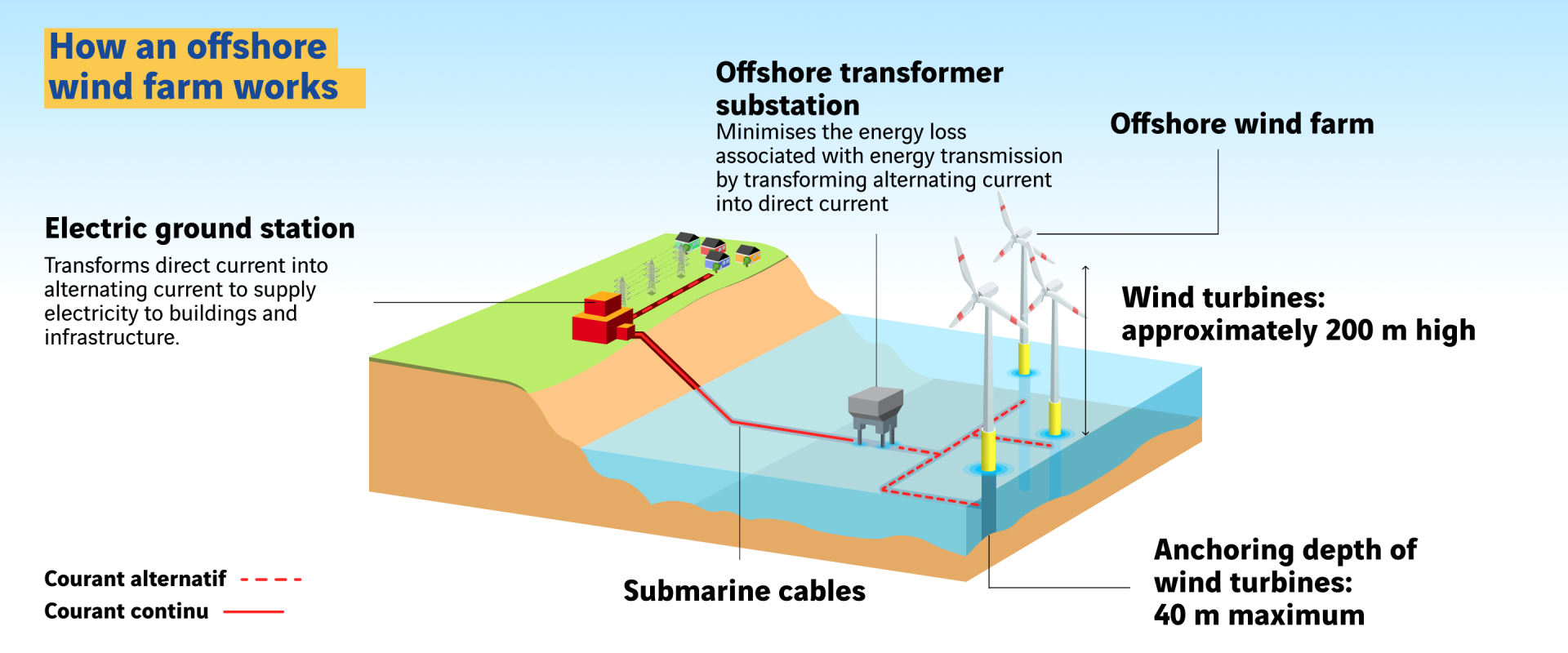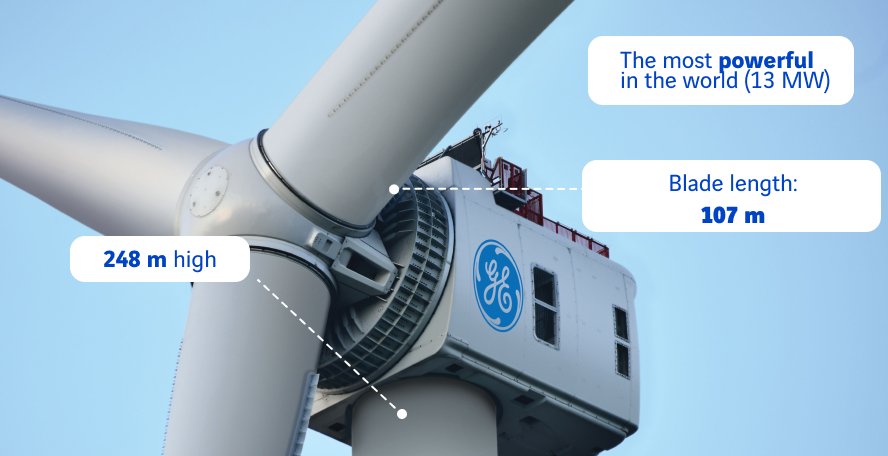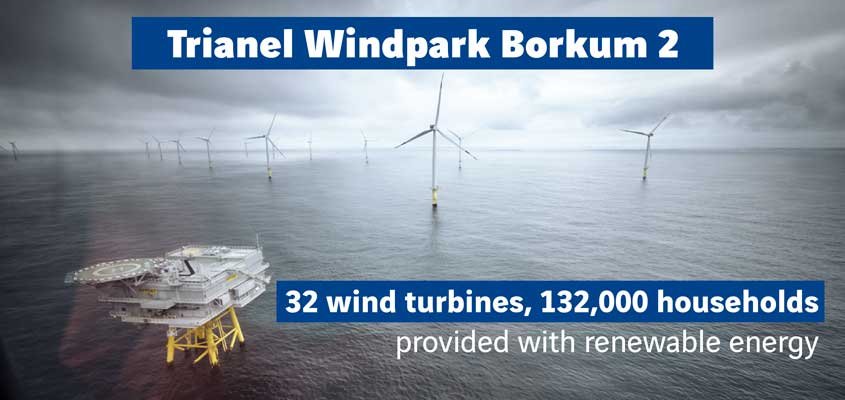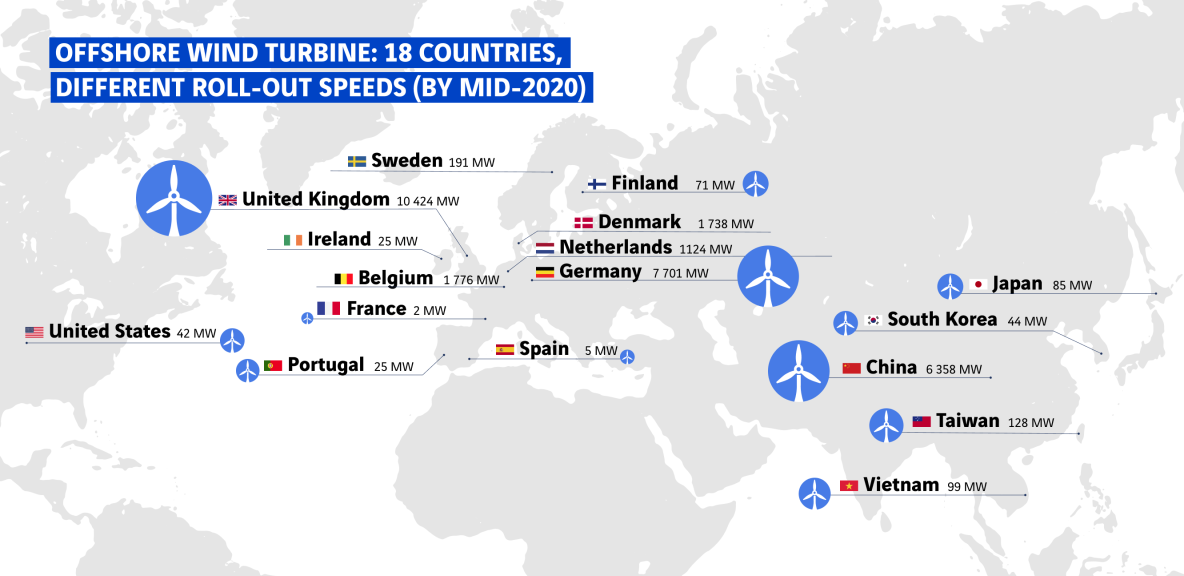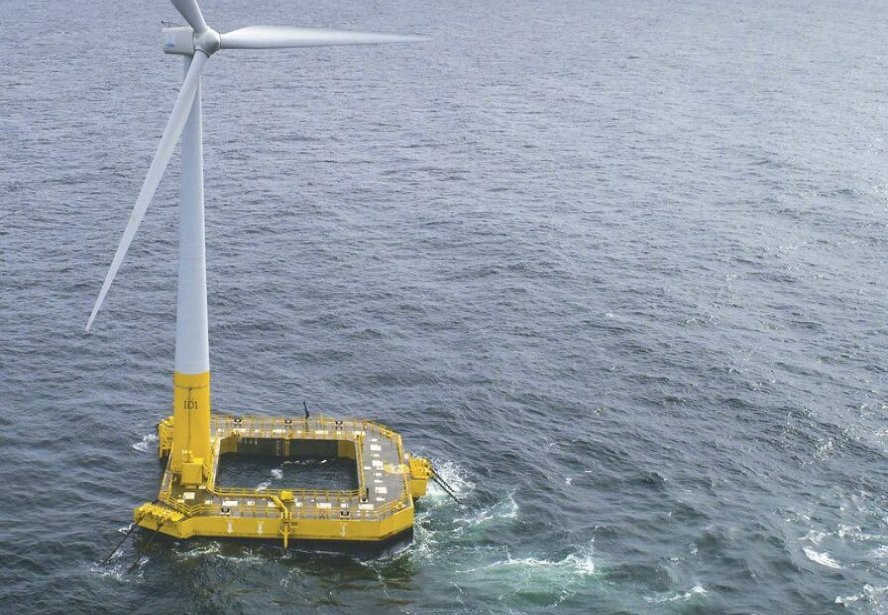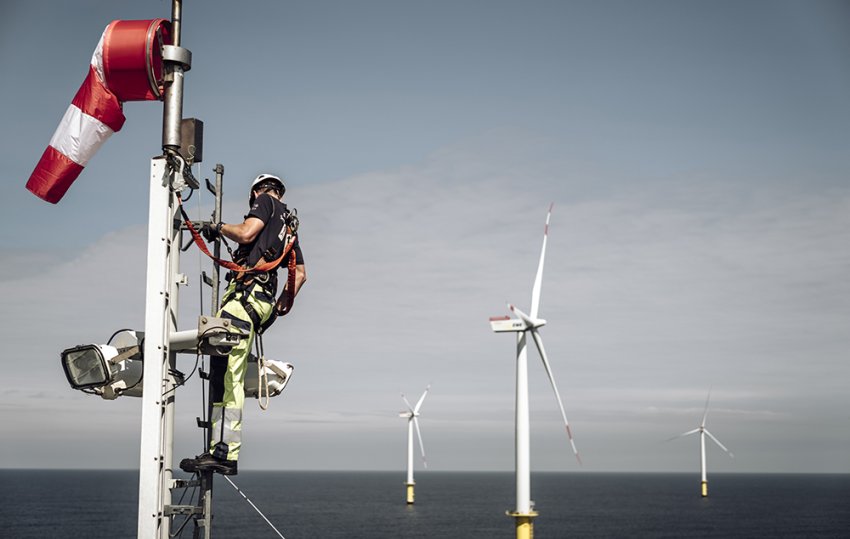
Offshore wind power: The global situation
Larger and with stronger wind resources than their land-based cousins, offshore wind turbines are a promising source of renewable energy. Most scenarios consider offshore wind an essential component in our future energy mix. However, even though the market is booming worldwide, it has not deployed at the same speed around the world. Acceptability, efficiency, cost of installations and materials... what are the barriers, and how can they be removed?
Energy is a major socio-economic and environmental challenge for the coming decades. The wind that blows at sea is a promising source of energy. Located more than 10 km from the coast, offshore wind turbines harness this energy, which is transmitted to the onshore network via an underwater cable. Measuring up to 200 m high – wind speed increases with altitude – they also have wider blades. Apart from these differences, their operation is the same.
Offshore wind power, a sector with the wind in its…Blades!
The production of offshore wind turbines is increasing year-by-year (up 26% between 2018 and 2019 according to the International Energy Agency). For Rita Sousa, partner in the Faber Ocean / Climate tech fund and guest at the Marine renewable energy: harnessing the untapped power of swell and wind conference organized at Leonard - VINCI Group’s foresight platform and fast track for innovative projects -, the sector is expected to reach $87 billion by 2026, with an annual growth rate of 13%.
Offshore wind turbines can produce 2 times the energy of an onshore turbine
Because offshore winds are stronger, these turbines can produce up to 60% more energy than onshore wind turbines*. And because the winds are also more regular, they rotate more consistently: a significant advantage when we know the challenge posed by the intermittency of renewable energy. The other advantage is that at sea, wind turbines are close to where the power is consumed: 60% of the world's population lives less than 150 km from the coast. This limits losses during power transmission.
*Source : Ademe
Technology progressing as fast as wind
Constant improvements are being made to improve turbine efficiency. A new generation of mega-wind turbines is being developed. The latest is the Haliade-X from GE Renewable Energy: standing 248 metres high and with 107 meters long blades, this giant of the seas is currently the most powerful in the world (13 MW). Its nacelles are assembled in the extension of the Saint-Nazaire offshore wind turbine plant by VINCI, France.
Uneven global rollout
Despite these promises, the global energy capacity of offshore wind turbines is still low compared to onshore wind turbines. This is due to varying legal and administrative frameworks in different countries, which can slow down rollout and make the selection of locations more complicated. High production, installation - related to both the foundation system and the land connections - and maintenance costs also explain this delay. As a result, not all countries are moving forward at the same pace. Today, five countries (United Kingdom, Germany, Belgium, Denmark and China) account for nearly 95% of the installed capacity of offshore wind, it is a very concentrated sector.
High concentration of offshore wind power in Europe
Europe’s maritime space – the largest in the world – is an asset for the implementation of renewable energy infrastructures. Projects are concentrated in the North Sea. VINCI participated in construction of the Trianel Windpark Borkum 2 in Germany, a 200 MW offshore wind farm supplying 130,000 homes with renewable energy. And in Spain, VINCI built the DolWin Kappa conversion platform, transported to the North Sea to complete TenneT's offshore network. This platform converts the electricity generated at sea and connects it to the high-voltage onshore grid.
But even within Europe, some countries have fallen behind: while the first call for tenders to create an offshore wind farm was launched in 2012 in France, the first one was only operational at the end of 2022, off Saint-Nazaire.
New entrants in the offshore wind market
Outside Europe, China is not to be outdone: at the end of 2021, it commissioned three new projects, including the country's largest offshore wind farm with the largest turbines. New countries are also jostling for a position in this sector, such as Taiwan, the United States and South Korea. South Korea is planning to build the largest wind farm in the world: at 8.2 GW, its production would be equivalent to that of six nuclear reactors.
Working on the acceptability of offshore wind turbine projects
How to make biodiversity, fishing and offshore wind turbines coexist
In the United States as in France, the offshore wind industry has been weakened by a blast of public protest. Many coastal residents are opposed to these structures, which are accused of visual pollution, but also of disrupting economic activities such as fishing and the sea bed.
In a report, ADEME concludes that the impacts are limited to the construction period of the offshore park and that, once installed, the fauna returns to populate the area. The French Research Institute for Exploitation of the Sea (Ifremer) even adds that “the installation of structures at sea can create a reef effect on sandy bottoms and promote the presence of fish”.
Floating wind turbines: A solution to opposition?
Transparency and dialogue are key to moving the industry forward. So are innovation and the development of other technologies. For example, floating wind farms are increasingly popular as an alternative. Unlike a wind turbine, whose structure is assembled on the open sea and then fixed to the ground, a floating wind turbine can be assembled on land and towed offshore using floats. The result is fewer negative impacts on the environment during construction, and a smaller footprint. But more importantly, they are constructed further offshore, which makes them less likely to be visible from the coast and reduces conflicts with other uses (e.g. fishing, boating, etc.). In countries where the seabed is too deep to install traditional wind turbines, as in France, floating wind turbines are an interesting alternative.
Accelerating the rollout of offshore wind means overcoming the obstacles linked to cost, the ongoing relative efficiency of this type of renewable energy infrastructure, administrative procedures and the reluctance of public opinion. For Irina Lucke, Division Manager at VINCI Energies, this will only be possible by setting clear national and international objectives. And by forging partnerships between public and private stakeholders to speed up investment. The European Commission plans to invest nearly €800 billion over the next 30 years to achieve its targets. Specialized private funds are also supporting entrepreneurs in the sector. One example is Faber Ocean / Climate Tech, which is actively investing in technologies that can increase the efficiency and lifespan of offshore renewable energy production infrastructure.
Most viewed
Explore more
Words from researchers: let's fight stereotypes!
Charlotte, a research fellow at École des Mines, and Erwan, a university professor and researcher at AgroParisTech, talk…
Fondation VINCI pour la Cité: opening the door to others is another way of reaching out!
With some 1.3 million organisations and 2 million employees, France can lay claim to a dynamic network of associations…
Sea water desalination: a solution for turning the tide on the water scarcity crisis?
As water shortages continue causing havoc in a growing number of regions around the world, an age-old idea is experiencing a…
